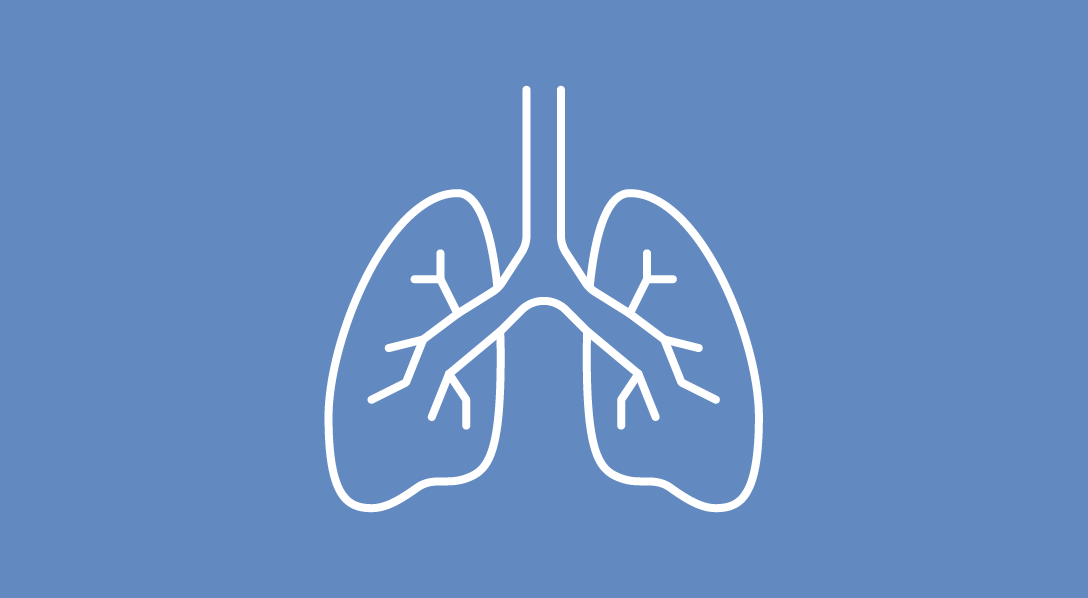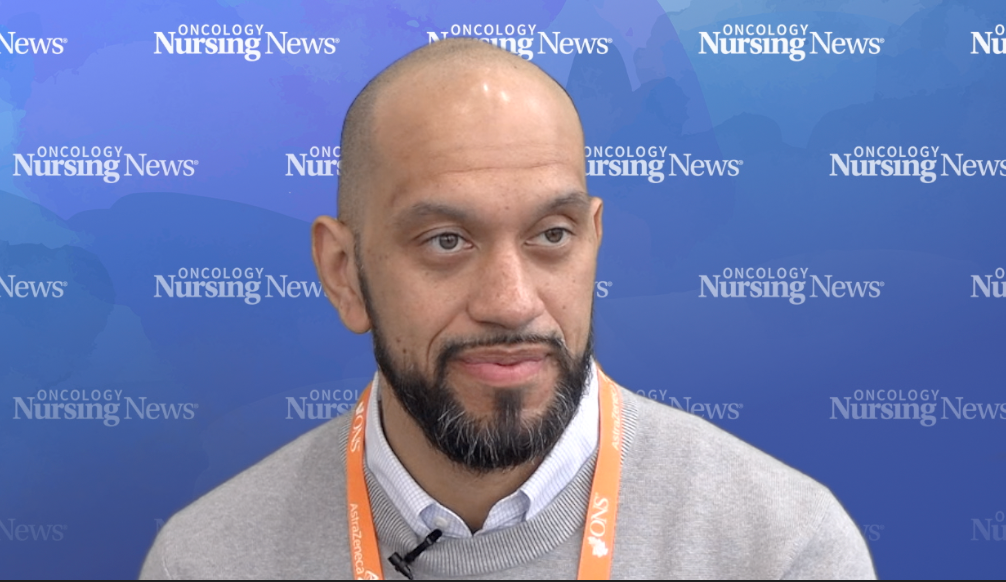Perioperative Tislelizumab Plus Chemo Improves Event-Free Survival in Resectable NSCLC
Treatment with neoadjuvant tislelizumab plus platinum-based doublet chemotherapy, followed by surgery and adjuvant tislelizumab, improved event-free survival in patients with resectable non–small cell lung cancer.
Perioperative Tislelizumab Plus Chemo Improves Event-Free Survival in Resectable NSCLC

Patients with resectable non–small cell lung cancer (NSCLC) treated with neoadjuvant tislelizumab (BGB-A317) plus platinum-based doublet chemotherapy (PtDb) followed by surgery and adjuvant tislelizumab experienced significant improvements in event-free survival (EFS) when compared with neoadjuvant placebo plus PtDb followed by surgery and adjuvant placebo, according to results from the phase 3 RATIONALE-315 trial (NCT04379635) presented during the February ESMO Virtual Plenary.1
At a median follow-up of 22.0 months (range, 0.1-38.4), the hazard ratio (HR) for EFS between the tislelizumab and placebo arms was 0.56 (95% CI, 0.40-0.79; P = .0003), favoring perioperative tislelizumab. The median EFS by blinded independent central review (BICR) was not reached (NR) in both arms. The respective 12-month EFS rates were 80.0% and 68.1%, respectively; at 24 months, these rates were 68.3% and 51.8%, respectively. A clinically meaningful improvement in EFS with tislelizumab by investigator assessment was also observed, with a HR of 0.55 (95% CI, 0.39-0.77).
A trend in overall survival (OS) benefit favoring perioperative tislelizumab vs placebo was also observed. The median OS was NR in both arms (HR, 0.62; 95% CI, 0.39-0.98; 1-sided P = .0193). The 12-month OS rate with tislelizumab was 94.5% vs 90.9% with placebo; at 24 months, these respective rates were 88.6% and 79.4%, respectively.
As previously reported during the 2023 ESMO Congress, the major pathologic response (MPR) reported in the tislelizumab arm (n = 226) was 56.2% by blinded independent pathology review (BIPR) vs 15.0% in the placebo arm (n = 227), translating to a 41.1% difference between the arms (95% CI, 33.2%-49.1%; P < .0001).2 Neoadjuvant tislelizumab plus PtDb chemotherapy also resulted in a significant improvement in pathologic complete response (pCR) by BIPR vs neoadjuvant placebo plus PtDb chemotherapy, at 40.7% and 5.7%, respectively; this translated to a difference of 35.0% (95% CI, 27.9%-42.1%; P < .0001).
“Taken together, the statistically and clinically significant EFS, MPR, and pCR benefits, alongside manageable safety, support the use of perioperative tislelizumab plus neoadjuvant PtDb chemotherapy for patients with resectable stage I to IIIA NSCLC,” Dongsheng Yue, MD, PhD, of Tianjin Medical University Cancer Institute and Hospital in Tianjin, China, said in a presentation of the data.1
For patients with resectable, early-stage NSCLC, surgery provides the most potential for cure but depending on disease stage, disease recurrence rates at 5 years could be as high as 67%. Recent data have indicated clinical benefit with perioperative approaches comprised of anti–PD-(L)1 monoclonal antibodies paired with neoadjuvant chemotherapy.
The RATIONALE-315 trial included Chinese patients with resectable stage II to IIIA NSCLC by the eighth edition of American Joint Committee on Cancer guidelines. To participate, patients were required to have EGFR or ALK wild-type disease and an ECOG performance status of 0 or 1.
Study participants (n = 453) were randomly assigned 1:1 to receive 200 mg of neoadjuvant tislelizumab intravenously (IV) or placebo plus PtDb chemotherapy every 3 weeks for 3 to 4 cycles followed by surgery and 400 mg of IV tislelizumab or placebo every 6 weeks for up to 8 cycles. PtDb chemotherapy was based on whether the patient had squamous or nonsquamous disease. Those with squamous disease received cisplatin or carboplatin plus paclitaxel, and those with nonsquamous disease were given cisplatin or carboplatin plus pemetrexed. Adjuvant treatment was only given to those with an ECOG performance status of 0 or 1 and acceptable organ function for up to 8 cycles or until recurrence or progression, intolerable toxicity, death, or the patient or investigator determined that treatment should be discontinued.
Randomization was stratified by histology (squamous vs nonsquamous), disease stage (II vs IIIA), and PD-L1 expression (≥1% vs <1% or not evaluable [NE]/indeterminate).
The primary end points of the study were MPR rate by BIPR and EFS by BICR. Key secondary end points included pCR by BIPR, OS, investigator-assessed EFS, and safety, among others.
"The overall type I error was strongly controlled at a 1-sided alpha of 0.025,” Yue said. “The interim analysis for EFS was planned for when approximately 75% of the targeted EFS events, or 184, had occurred, with Lan-DeMets alpha spending function approximation to the O’Brien-Fleming boundary. The OS interim analysis was to be tested with Haybittle-Peto P-value boundary at 0.0001 at this interim analysis.”
In the tislelizumab arm, all patients received neoadjuvant treatment but 93.4% completed the treatment; 57.5% received 3 cycles of tislelizumab and 34.5% of patients received 4 cycles of the agent. Of these patients, 84.1% went on to undergo definitive surgery with 74.3% going on to receive adjuvant tislelizumab. Almost half (46.9%) of the 168 patients who received adjuvant treatment completed the treatment; 4.9% were still receiving treatment at the data cutoff date of August 21, 2023. In the placebo arm, 99.6% of patients received neoadjuvant treatment and 92.5% of those patients completed it; 76.2% of those patients went on to surgery and 64.8% of those patients were given adjuvant placebo. Of the 147 patients who received adjuvant treatment, 44.5% completed it and 3.5% were still receiving it at data cutoff.
Across the treatment arms, the median patient age was 62.5 years (range, 56.0-68.0). All patients were Asian. The majority of patients in the tislelizumab and placebo arms, respectively, were male (90.7% vs 90.3%), had an ECOG performance status of 0 (62.8% vs 67.8%), and were current or former smokers (85.4% vs 83.7%).
Regarding histology, 79.2% of those in the tislelizumab arm had squamous disease and 19.9% had nonsquamous disease; these rates were 77.1% and 22.0%, respectively, in the placebo arm. Moreover, 40.7% and 58.4% of patients in the tislelizumab arm had stage II and stage IIIA disease, respectively; in the placebo arm, these respective rates were 40.1% and 58.6%. In terms of PD-L1 expression, 57.5% of those who received tislelizumab had an expression of 1% or higher, 39.4% had an expression below 1%, and 3.1% were not evaluable for this. In those who received placebo, 37.0% of patients had a PD-L1 expression less than 1%, 58.1% had an expression of 1% or higher, and 4.8% were not evaluable.
Additional data showed that the EFS benefit derived with perioperative tislelizumab compared with placebo was generally consistent across prespecified subsets.
When broken down by histology, the median EFS in those with squamous disease who received tislelizumab (95% CI, NE-NE) or placebo (95% CI, 16.6-NE) were NR (HR, 0.56; 95% CI, 0.38-0.83). The 12-month EFS rates in the tislelizumab and placebo arms were 79.8% and 70.5%, respectively; at 24 months, these rates were 70.2% and 52.2%, respectively. In those with nonsquamous disease, the median EFS with tislelizumab was NR (95% CI, 19.1-NE); it was also NR (95% CI, 11.1-NE) with placebo (HR, 0.64; 95% CI, 0.32-1.26). The respective 12-month EFS rates were 80.3% and 61.4%, respectively; the respective 24-month rates were 60.8% and 52.1%, respectively.
When broken down by disease stage, those with stage II disease who received tislelizumab (95% CI, NE-NE) or placebo (95% CI, 16.6-NE) experienced median EFS that was NR (HR, 0.47; 95% CI, 0.26-0.87). The 12-month EFS rates with tislelizumab and placebo were 85.2% and 74.2%, respectively); the respective 24-month EFS rates were 75.7% and 56.2%. In those with stage IIIA disease, the median EFS with tislelizumab was NR (95% CI, 29.6-NE) vs 19.8 months (95% CI, 13.1-NE) with placebo (HR, 0.62; 95% CI, 0.42-0.94). The 12-month EFS rates with tislelizumab or placebo were 76.5% and 63.8%, respectively; the 24-month EFS rates were 63.3% and 48.5%, respectively.
At least 1 treatment-related adverse effect (TRAE) was experienced in 99.1% of those in the tislelizumab arm vs 99.6% of those in the placebo arm; these effects were grade 3 or higher for 72.1% and 66.4% of patients, respectively, and serious for 15.5% and 8.0% of patients, respectively. TRAEs resulted in death for 4 patients who received perioperative tislelizumab and 2 patients who were given placebo.
TRAEs required dose modifications for 38.9% of those given tislelizumab vs 32.3% of those given placebo; they led to surgical delays for 5.3% and 1.8% of patients, and surgery cancellation for 1 patient each. TRAEs resulted in treatment discontinuation for 12.8% of those in the tislelizumab arm and 9.3% of those in the placebo arm.
At least 1 immune-mediated adverse effect was experienced by 39.8% of those in the tislelizumab arm and 17.7% of those in the placebo arm; these effects were grade 3 or higher for 9.3% and 2.7% of patients and serious for 10.2% and 2.2% of patients. In the tislelizumab arm, immune-mediated AEs resulted in dose modification, treatment discontinuation, or death for 13.3%, 6.6%, and 0.9% of patients, respectively; in the placebo arm, these respective rates were 2.7%, 0%, and 0%.
The most frequently reported TRAEs experienced by 20% or more of patients in the tislelizumab arm included decreased neutrophil count (any grade, 78.3%; grade ≥3, 61.1%), decreased white blood cell count (63.3%; 16.8%), alopecia (46.9%; 0.4%), anemia (40.3%; 4.9%), increased alanine aminotransferase (28.8%; 0.9%), nausea (26.5%; 0.4%), increased aspartate aminotransferase (23.5%; 0.9%), decreased platelet count (20.8%; 2.2%), hypoaesthesia (19.5%; 0%), and reduced appetite (17.7%; 0.4%).
The most common immune-mediated AEs reported in at least 1% of patients who received tislelizumab were immune-mediated skin reaction (any grade, 17.3%; grade ≥3, 2.2%), immune-mediate pneumonitis (8.0%; 3.1%), immune-mediated hepatitis (2.2%; 1.8%), and immune-mediated endocrinopathies such as hypothyroidism (14.6%; 0.9%), hyperthyroidism (7.1%; 0.4%), thyroiditis (2.2%; 0%), and adrenal insufficiency (1.3%; 0.4%).
References
- Yue D, Wang W, Liu H, et al. VP1-2024: RATIONALE-315: event-free survival (EFS) and overall survival (OS) of neoadjuvant tislelizumab (TIS) plus chemotherapy (CT) with adjuvant TIS in resectable non-small cell lung cancer (NSCLC). Ann Oncol. Published online February 15, 2024. doi:10.1016/j.annonc.2024.01.005
- Yue D, Wang W, Liu H, et al. LBA58 pathological complete response to neoadjuvant tislelizumab (TIS) plus platinum-doublet (PtDb) chemotherapy (CT) in resectable stage II-IIIA NSCLC patients (pts) in the phase III (ph3) RATIONALE-315 trial. Ann Oncol. 2023;34(suppl 2):S1299. doi: 10.1016/j.annonc.2023.10.054




